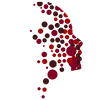Dysphagia is the term used to describe a disorder involving any and all phases of swallowing. Depending on the extent and severity of the dysphagia, a patient may be required to change what they eat, how they eat, or use an alternate means of nutritional delivery entirely (i.e., feeding tube).
The SLP staff will perform comprehensive evaluations to determine if you are experiencing dysphagia. They will also determine the reasons for this and how best to manage the dysphagia. This may include therapy, diet changes and/or ways of eating differently.
The SLP staff will perform comprehensive evaluations to determine if you are experiencing dysphagia. They will also determine the reasons for this and how best to manage the dysphagia. This may include therapy, diet changes and/or ways of eating differently.
When assessing Dysphagia, The SLP Staff considers two primary concerns:
Swallow Safety and Swallow Efficiency
Swallow Safety
When the swallow is not normal, it is possible for food, liquid and even the body’s own secretions that are typically swallowed to fall into the airway and lungs. This is known as aspiration. Patients may or may not realize this is happening! The lungs and pulmonary airways are sterile environments in the body. Any aspirated material introduces bacteria into the lungs. This can potentially lead to infection and even death. It’s also possible to choke, blocking the airway entirely and leading to asphyxiation.
Aspiration is a primary concern in dysphagia. The SLP staff will evaluate the swallow function and provide instructions for eating to allow for the safest intake of food. For this reason, it is very important to closely follow those instructions.
Aspiration is a primary concern in dysphagia. The SLP staff will evaluate the swallow function and provide instructions for eating to allow for the safest intake of food. For this reason, it is very important to closely follow those instructions.
Swallow Efficiency
For most people, a meal can be eaten quickly, over the course of several minutes. In the presence of dysphagia, however, the swallow efficiency may be compromised, meaning it will take a longer than standard period of time to consume food/liquid. If there is very poor swallow efficiency, the patient may be physically incapable of taking in enough nutrition by mouth to meet their individual needs. This is also a very important consideration when assessing dysphagia and the SLP staff will provide eating instructions with this in mind. For example, although it may be safe for you to eat a regular diet (i.e., no elevated aspiration risk), if it takes a very long time to chew more solid foods, you may be instructed to stick to a SOFT diet to allow for better efficiency.
Because dysphagia may place you at an increased risk for aspiration as well as nutritional compromise, it is very important to follow the guidelines for eating set forth by the SLP staff. Specific guidelines for special diets can be found in Dietary Guidelines.
Because dysphagia may place you at an increased risk for aspiration as well as nutritional compromise, it is very important to follow the guidelines for eating set forth by the SLP staff. Specific guidelines for special diets can be found in Dietary Guidelines.

